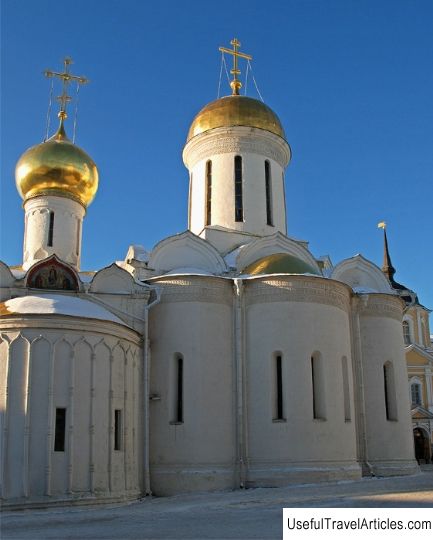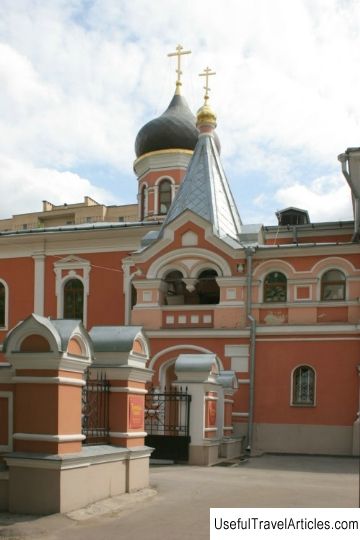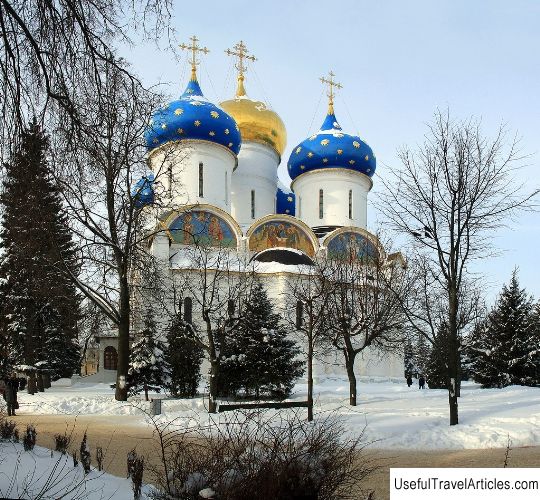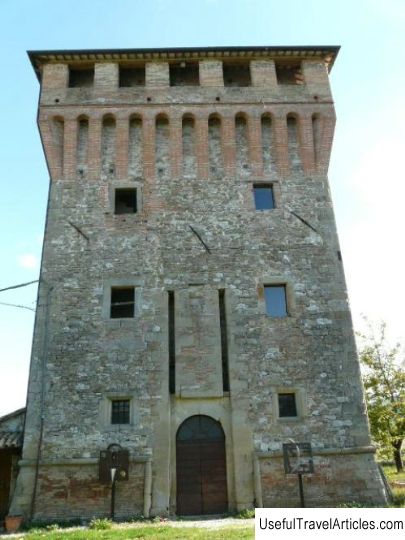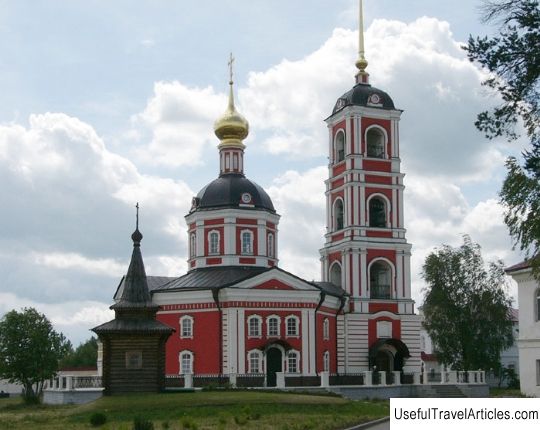Trinity-Sergius Lavra description and photo - Russia - Golden Ring: Sergiev Posad
Rating: 8,0/10 (987 votes) 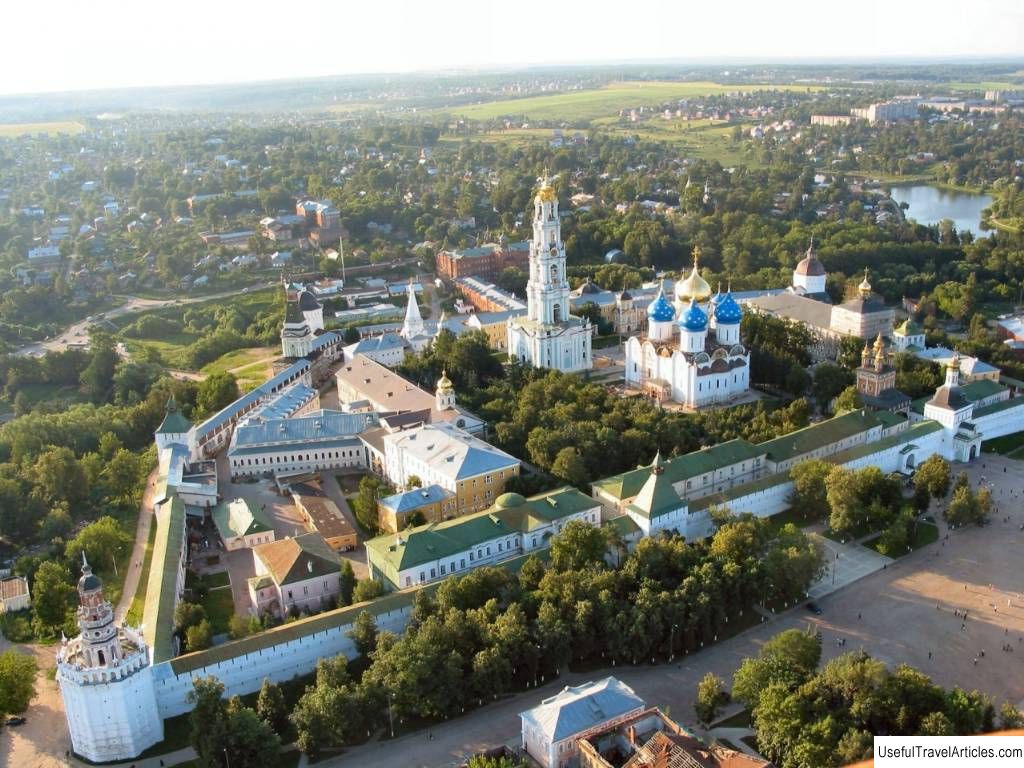
Trinity-Sergius Lavra description and photos - Russia - Golden Ring: Sergiev Posad. Detailed information about the attraction. Description, photos and a map showing the nearest significant objects. Photo and descriptionTrinity-Sergius Lavra in Sergiev Posad, 50 km. from Moscow - the most famous, largest and most beautiful monastery in Russia. Over the centuries, it has become the focus of the spiritual life of the Russian state. Now it is the main attraction of the Moscow region. History of the monasteryThe Trinity Monastery was founded in 1337 by St. Sergiy of Radonezh . At first Sergius lived as a hermit, but soon those who would like to live under his leadership began to flock to him. A small wooden monastery became known throughout Russia: St. Sergius knew how to reconcile warring princes. It was he who blessed Dmitry Donskoy for the Battle of Kulikovo. They began to call him "Hegumen of the Russian land" - a huge number of Russian monasteries were founded by his students and students of his students. In the XIV-XV centuries. the monastery grows and riches. It is the spiritual center around which the life of the Moscow principality is built. A stone Trinity Cathedral is being erected here, then a stone Refectory. A large construction is associated with the name of Ivan the Terrible - he loved this monastery very much and donated a total of about 25 thousand rubles for it. Under him, a new Assumption Cathedral was built, new walls and towers were erected, ponds were dug. The fortress was so strong that during the Time of Troubles for more than a year (1608-1609) it successfully withstood the siege of the Polish-Lithuanian troops ... The monastery was badly damaged, many of its defenders died, but it was not taken. The then Archimandrite Dionysius gave most of the monastic treasury to organize the militia of Minin and Pozharsky. In the 17th-19th centuries, the monastery was rebuilt and decorated: new buildings in the Naryshkin Baroque style appeared, the interiors were updated. Under Elizaveta Petrovna, the Theological Seminary was opened here - it still exists. The monastery is one of the largest farms: it owns vast lands, its own production (candles and church utensils), a printing house. The most famous abbots of the monastery in the 19th century are Metropolitan Platon Levshin, rector of the seminary, church writer and teacher of the heir to the throne Alexander I, and Philaret Drozdov, the Moscow metropolitan who is now revered as a saint. In 1920, the monastery and the temples were closed. The territory was transferred to the museum and the Zagorsk Pedagogical College, some of the premises were used for housing. After the war, a large-scale restoration was carried out, which turned out to be a very difficult task: the complex of monastic buildings took shape for several centuries, and it was necessary to decide when to return the appearance of specific buildings. As a result, the modern appearance of the monastery reflects the development of architecture from the 15th century to the 18th and is one of the most interesting and beautiful in Russia. Since 1993, the ensemble of the Trinity-Sergius Lavra has been included in the UNESCO World Heritage List. The monastery was revived in 1946, the seminary reopened, and until 1983 the Lavra was the residence of the patriarchs. Some of the buildings belonged to the church, some to the museum, and some to the Pedagogical College. Now all the buildings have been returned to the church, the museum has been moved to the rebuilt "Horse yard" next door. Only one museum exposition remained in the Lavra - the Sacristy. What to see in the monasteryA small Nikonovskaya church is adjacent to the Trinity Cathedral, built in 1623 over the burial of St. Nikon of Radonezh, Sergius' successor. It is located at the southern wall and actually forms one whole with the cathedral. Fragments of frescoes from the beginning of the 17th century have been preserved here, the rest of the interior is a reconstruction of the 1950s. Here is located what is considered miraculous a copy of the "Quick to Hearken" icon and a stone from the Holy Sepulcher The small Church of St. Spirit , built in 1477 - the second stone church of the monastery. This is the most ancient temple of the type called "Izhe under the bells" - a temple that combines both a church and a belfry. It repeats the shape of the Trinity Church, but is smaller, more elegant and richer decorated. It was built by Pskov craftsmen and they also brought with them the "Pskov" kind of bell ringing, which is not common in the central regions - when the bells swing with the beams holding them. At the young wall of the cathedral, there was once a chapel-tomb, now it is dismantled, and the burials are simply located against the wall. At the same time, a five-tiered iconostasis was created, and the icons themselves in it date back to the 17th-18th centuries. In the first half of the 17th century, the monastery, which was damaged during the siege, was rebuilt. In 1635-37. there are new hospital wards with the tent church of St. Zosima and Savvaty Solovetsky . The hospital chambers were rebuilt in the middle of the 18th century, but the Soviet restoration returned them to their original appearance. In 1644, a new chapel was built over the source . Two elegant buildings give a festive look to the whole complex: the gateway church of the Nativity of John the Baptist (1699) and the Refectory chamber with the church of St. Sergius . The Church of St. John the Evangelist now has five baroque domes of a multifaceted shape, a row of columns with capitals and decorative checkerboard painting on the walls - all of which were restored during the 1974 restoration. The interior was made in the 19th century and restored during the restoration - it is a carved iconostasis of the first third of the 19th century and a painting from 1872. The second building, built in the same Naryshkin Baroque style and also painted, is the Refectory and the Church of St. Sergius in it. It was built to commemorate the 300th anniversary of the death of St. Sergius in 1692. It is a solemn building with a wide front porch and richly carved decor. The baroque interior was made in the 17th-18th centuries: there is an abundance of stucco moldings, a carved gilded iconostasis and murals from Catherine's time. The original iconostasis has not survived, this one was brought from the Moscow Nikolskaya Church on Ilyinka, and the icons were made in the 17th century by Simeon Kholmogorts, the famous Kremlin iconographer. The refectory itself is the largest pillarless refectory chamber in Russia, with an area of over 500 sq. meters. Now restoration is taking place inside and access may be limited. In the Trinity-Sergius Lavra there is one of the most ancient church museums - Sacristy . This is the only museum exposition that has now remained within the walls of the monastery, all other collections of the museum were transferred to the “ Horse yard ” complex located nearby. Here are collected the jewels of the 16th-19th centuries: rich contributions to the monastery, church utensils, vestments, icon frames, face sewing and much more. Since 2017, the exposition has been undergoing reorganization, but part of it is exhibited in the Horse Yard. Interesting facts
Notes
       We also recommend reading Church of San Francisco (Iglesia San Francisco) description and photos - Honduras: Tegucigalpa Topic: Trinity-Sergius Lavra description and photo - Russia - Golden Ring: Sergiev Posad. |
